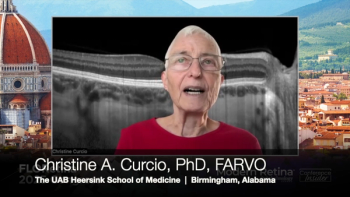
Angiogenesis 2022 review: Research makes strides in geographic atrophy, diabetic eye disease
A brief overview of findings presented at the 2022 Angiogenesis, Exudation and Degeneration meeting hosted by Bascom Palmer.
The 19th Angiogenesis, Exudation and Degeneration annual meeting, hosted by Bascom Palmer, was held February 11 and 12, 2022. The event was completely virtual, and it highlighted findings discussions about understanding and treating neovascular and exudative diseases of the eye.
Scientists, clinicians and healthcare experts gathered online to discuss developing pharmocotherapies as well as clinicial practice for management of neovascular AMD, macular edema, diabetic retinopathy, retinopathy of prematurity and additional exudative diseases of the eye.
AMD
Wet AMD
At Angiogenesis, Dr SriniVas R. Sadda discusses how choriocapillaris may predict the rate of progression of atrophy.
Most patients who had received monthly injections, that is, 92%, preferred the PDS after switching, with 88% having a very strong preference.
Previously treated patients showed significantly reduced treatment burden.
Geographic atrophy
Dr Nadia K. Waheed reviews the latest updates on the FOCUS trial, evaluating AAV-based viral vector GT005 for the treatment of geographic atrophy.
This study showed that an investigational subretinal implant, CPCB-RPE1, containing allogeneic human embryonic stem cell-derived RPE cells, was safe and well-tolerated by patients with dry AMD.
Stargardt Disease
Dr Carel Hoyng divulges the main takeaways from his Angiogenesis presentation, including the origins of Stargardt disease, correct diagnosis, ongoing gene therapy trials and the future of therapy.
Investigators in the Netherlands have developed an RNA therapy to halt the progression of Stargardt disease.
Diabetic Eye Disease
Diabetic retinopathy
During her talk at Angiogenesis, Dr Anat Loewenstein outlines how artificial intelligence could revolutionize diabetic retinopathy screening.
Dr David S. Boyer describes how blocking Connexin-43 may improve the retinal vascular system function in patients with diabetes, potentially creating a future of oral medication for treatment of diabetic retinopathy and AMD.
Diabetic macular oedema
Dr Carl Regillo discusses the 100-week results of KESTREL and KITE, two pivotal Phase 3 studies for brolucizumab for the treatment of diabetic macular oedema.
Faricimab is the first bispecific antibody designed for intraocular use that blocks 2 pathways, the angiopoietin-2 (Ang-2) and the vascular endothelial growth factor (VEGF) A pathways.
A once-daily oral drug targets inflammatory processes and thus far has been found to be well tolerated in a Phase 2 safety trial.
KALAHARI study finds THR-149 to be safe, well-tolerated with preliminary efficacy as treatment for DMO patients who respond suboptimally to anti-VEGF.
Dr Arshad M. Khanani reviews the Phase 2 part A results of the KALAHARI study of THR-149 for the treatment of DMO.
Newsletter
Get the essential updates shaping the future of pharma manufacturing and compliance—subscribe today to Pharmaceutical Technology and never miss a breakthrough.








































